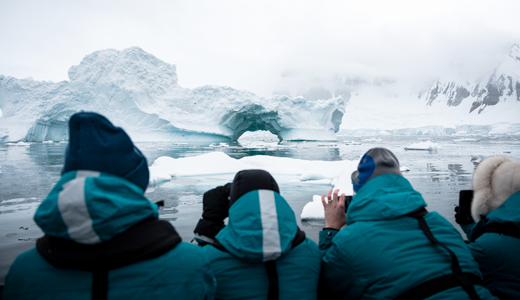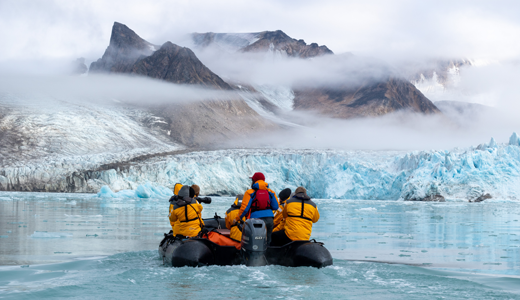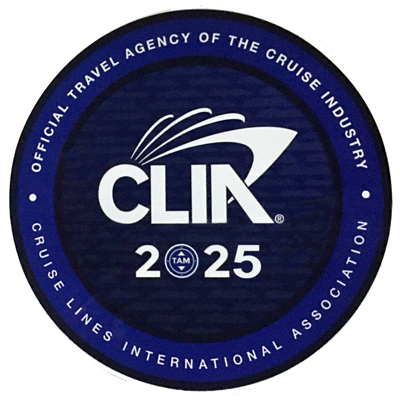A Guide to the Arctic: Discover How Each Destination Tells a Different Story
By Maysa Santoro | Epic Polar's Photographer and Explorer

When we think about the Arctic, it's important to first understand what it truly is.
Unlike Antarctica, a frozen continent surrounded by ocean, the Arctic is an ocean surrounded by land. It's a mosaic of icy seas, rugged islands, and northern coastlines belonging to eight different countries. This geography creates immense variety, from wild glaciers and drifting sea ice to vibrant northern cultures and surprisingly rich wildlife.
So, when planning your journey to the top of the world, understanding how each Arctic destination differs helps you choose the expedition that will move you the most.
Would you rather sail through the Canadian Arctic, visiting remote Inuit communities and tracing the fabled route of the Northwest Passage? Or venture into Svalbard, Europe's last true wilderness, where polar bears still roam free beneath the midnight sun? Perhaps you'd prefer to explore Norway's dramatic fjords, where the northern lights paint the night sky in waves of color?
Let's explore what makes each corner of the Arctic unique and why travelers fall in love with them in very different ways.
Svalbard: The realm of the polar bear

Located halfway between mainland Norway and the North Pole, Svalbard is a paradise for wildlife enthusiasts and lovers of dramatic, untamed landscapes. This remote archipelago of glaciers, ice-capped peaks, and sweeping tundra plains is home to more polar bears than people.
Protected under both Norwegian and international law, polar bears have been fully safeguarded here since 1973. Hunting, luring, pursuing, feeding, or disturbing them is strictly prohibited, making Svalbard one of the best places on Earth to observe these magnificent marine mammals in their natural habitat.
The surrounding waters are equally rich in life. You may spot fin whales, the world's second-largest whale, as well as walruses and other pinnipeds, all thriving in this pristine Arctic ecosystem.
What It's Like
Svalbard's capital, Longyearbyen, is the northernmost settlement on Earth with a regular commercial flight schedule. The archipelago is famous for its sharp, rugged mountains, especially around Spitsbergen (the largest island). From there, your expedition vessel will be waiting for you to venture into remote fjords, icy bays, and dramatic glaciers.
Experiences
- Spot polar bears on the mountains and drifting sea ice.
- Observe walruses, Arctic foxes, seals, and migratory seabirds.
- Visit scientific research stations and abandoned mining settlements.
- Experience 24-hour daylight from May to August, or the ethereal twilight of the polar night.
Why It's Different
Svalbard feels like the edge of the world, isolated, raw, and incredibly photogenic. It offers the quintessential Arctic experience: vast ice, pristine wilderness, and abundant wildlife. Yet it's still logistically accessible via Norway, making it ideal for an expedition cruise or adventure-focused voyage.
Perfect for: wildlife lovers, photographers, and travelers craving a true polar wilderness experience.

Pro tip from Maysa: If you're into photography, be sure to bring a telephoto zoom lens for close-ups of polar bears, Arctic foxes, and other wildlife. I recommend at least a 70–200mm lens with a 2x teleconverter, or ideally a 100–400mm or 200–600mm. These longer lenses will greatly increase your chances of capturing detailed shots, since animals are often seen from a distance. According to AECO guidelines, strict minimum distances must always be respected to ensure safe and responsible wildlife viewing, a core principle of true ecotourism.
Greenland: the iceberg land

Greenland, the world's largest island, offers an Arctic experience on an epic scale. About 80% of its vast landmass is blanketed by an immense ice sheet that spills into colossal fjords, where blue-tinted icebergs drift like floating cathedrals. You'll know you've arrived in Greenland when you glance out your window and see towering ice sculptures of every size and shape gliding silently across the water.
What It's Like
Greenland's coastlines are dotted with small Inuit settlements, colorful houses, and glaciers tumbling into the sea. The east is wild and remote; the west is more accessible, with towns like Ilulissat and Nuuk serving as gateways to Greenlandic culture.

Experiences
- Cruise among towering icebergs in Disko Bay.
- Visit Inuit communities and learn about traditional Arctic lifestyles.
- Explore vast fjords by Zodiac and witness calving glaciers up close.
- Hike across tundra valleys or kayak beneath cliffs filled with nesting seabirds.
Why It's Different
Greenland offers a blend of raw wilderness and rich culture. Its landscapes are unmatched in scale and beauty, yet what truly sets it apart is the human spirit, the resilience and warmth of the Greenlandic people, who have thrived here for centuries. You'll discover their deep connection with nature, their profound respect for the animals they hunt to sustain their communities, and the way they live in harmony with the changing rhythms of the Arctic seasons, dancing to the pulse of the environment itself.
Perfect for: travelers seeking both cultural immersion and awe-inspiring natural beauty — and who don't mind a touch of adventure and unpredictability.
The Canadian Arctic & The Northwest Passage

Few places capture the imagination quite like the Canadian Arctic. It's a region of remote islands, sea ice, and endless tundra and unique cultures stretching across Nunavut, Baffin Island, and the Northwest Territories.
What It's Like
Here lies the Northwest Passage, the fabled maritime route linking the Atlantic and Pacific Oceans, once sought by explorers for centuries and now accessible during the brief Arctic summer.
The landscape is vast and untouched: rocky shores, glaciers, drifting icebergs, and deep fjords that seem to stretch forever.
Experiences
- Follow the route of early explorers aboard an expedition ship.
- Visit small Inuit communities such as Pond Inlet or Cambridge Bay.
- If you're lucky, you''ll spot polar bears, narwhals, musk oxen, and beluga whales.
- Explore archaeological sites linked to the Franklin Expedition and other historic voyages.
Why It's Different
This is the Arctic at its most remote. Travel here means long sea days, unpredictable ice, and minimal infrastructure, but the reward is pure wilderness and rare cultural encounters. Few travelers on Earth ever set foot this far north, making it a once-in-a-lifetime experience.
Perfect for: seasoned adventurers, history enthusiasts, and those drawn to the world's most isolated frontiers.
Iceland: The Gateway to the Arctic

Though technically just south of the Arctic Circle (except for a few northern islands that cross it), Iceland is often considered the gateway to the Arctic and an essential part of many Arctic voyages.
What It's Like
Iceland's dramatic landscapes tell the story of fire and ice: active volcanoes, glaciers, black-sand beaches, and cascading waterfalls. It's one of the few places where you can witness both geothermal energy and glacial forces shaping the land.
Experiences
- Visit Reykjavík, one of the world's most northerly capitals.
- Hike glaciers or relax in natural hot springs.
- Spot puffins and whales along the rugged coast.
- Join expedition cruises that depart Iceland to explore Greenland or the Norwegian Arctic.
Why It's Different
Iceland combines accessibility, comfort, and striking natural contrasts. It's often the starting point or ending port for Arctic voyages — offering an easy transition between adventure and relaxation.
Perfect for: travelers who want to pair Arctic exploration with unique culture, cuisine, and landscapes that are unlike anywhere else on Earth.

Choosing the right Arctic experience for you
1. Accessibility & Comfort
- Norwegian Arctic and Iceland, are easiest to reach and travel in comfort.
- Svalbard, is remote but still has regular flights and expedition infrastructure.
- Greenland and the Canadian Arctic, are more logistically challenging but reward you with unmatched wilderness.
2. Wildlife
- Svalbard, is famous for polar bears.
- Greenland, offers whales, seals, and musk oxen.
- The Canadian Arctic, adds narwhals and belugas.
- Norway and Iceland, bring accessible whale watching and abundant seabirds.
3. Cultural Encounters
- Greenland and the Canadian Arctic offer authentic Inuit cultural experiences.
4. Scenery & Atmosphere
- For majestic fjords and photogenic peaks: Norway.
- For icebergs and glacial drama: Greenland.
- For raw, isolated wilderness: Canadian Arctic and Svalbard.
- For contrast and color: Iceland.
Final thoughts from the team
The Arctic isn't one single place, it's a collection of worlds at the top of our planet, each with its own rhythm, people, and spirit. Whether you seek comfort, culture, wildlife, or pure wilderness, there's an Arctic journey for you. And whichever path you choose, one thing is certain: the Arctic will change the way you see the world.
Bon voyage,
The Epic Polar team





